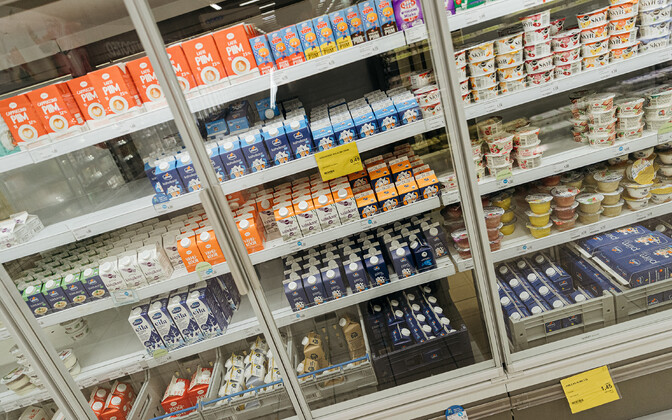Around 180,000 tons of food waste is generated in Estonia each year, half of which could be avoided. More dairy products may soon carry “best before” labels to help reduce waste.
A study conducted a few years ago found that the average household in Estonia generates about 150 kilograms of food waste each year — 60 kilograms of which could be avoided. According to experts, changing the expiration labeling on certain product groups could reduce food waste by as much as 10 percent.
Kristel Kibin, head of waste management and digitalization at the Ministry of Climate’s circular economy department, explained that avoidable food waste refers to waste that could have been prevented.
“For example, if we have leftover porridge at home in the morning and we throw it away, that’s avoidable food waste — because we could have cooked less or consumed it later. Unavoidable food waste, on the other hand, includes items that inevitably remain when cooking, such as chicken bones after roasting a chicken,” said Kibin.
Avoidable food waste also comes with a financial cost, Kibin noted.
“If we look at the latest study from 2021, they calculated the monetary value of wasted food. At the time, it amounted to more than €220 per year for a family with children. But if we take into account the price increases since then, along with the rising volume of food waste, it’s safe to say that today, that number could be over €300 per year — wasted food that ends up in the trash,” she said.
In an effort to reduce food waste, various experts met yesterday to discuss expanding the use of “best before” labeling on food products.
Kibin explained that “best before” dates would allow consumers to safely use products for a longer period of time, whereas “use by” dates should be reserved only for items that spoil quickly and could pose a health risk.
“‘Use by’ labeling is applied to very perishable foods and means the product must be consumed before that date for safety reasons. ‘Best before’ dates, however, indicate the period during which the product retains its expected quality — but in most cases, the food is still safe to eat even after that date,” Kibin said.
Airika Salumets, senior food safety specialist at the Ministry of Regional Affairs and Agriculture, said dairy products, especially pasteurized milk, could be among the first categories to adopt wider use of “best before” labeling.
“Actually, Tere and Farmi already use ‘best before’ dates, but some other producers don’t yet. I believe dairy is the first food group — especially pasteurized milk and fermented dairy products — where switching to ‘best before’ labeling would make sense,” said Salumets.
Discussions are also set to begin soon on how Estonia can meet the European Union’s food waste reduction targets.
—
